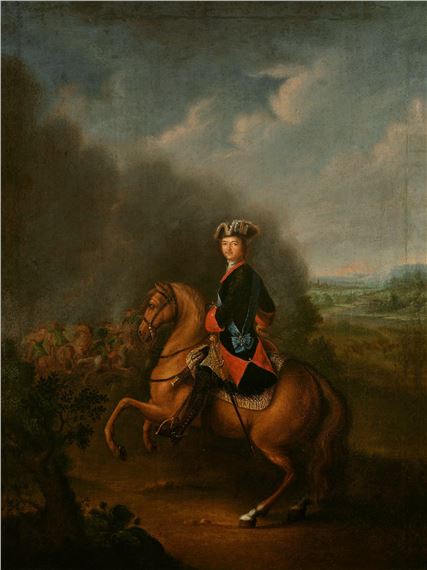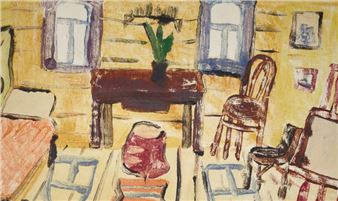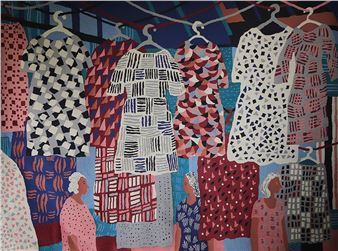Peter the Great: SovereignÔÇÖs Mustache
Peter I ascended the throne as the last tsar of All Russia and left it as the first Russian Emperor. Over the 29 years of his reign Peter the Great had a significant impact on the history of both Russia and Europe. Along with changes in economy, politics and culture, there was also an evolution in the rulerÔÇÖs external appearance, namely, in the shape of his mustache. For a long time hardly any researchers noticed this aspect in the images of Peter I, as it seemed that his mustache was neither a constant nor a sign of identification (it could either grow or be shaved). However, today its depiction in the rulerÔÇÖs portraits often helps specialists to attribute the works of art and to establish the artist and the time when they were created. The images presented at the exhibition show an evolution of the rulerÔÇÖs mustache as he grew and developed his personality, and his status and role in the world changed, as well as depending on his mood and health, a current fashion and the emperorÔÇÖs circle of contacts. For example, in the iconographic portrait of the young Peter by G. Neller we can see thin ÔÇ£EnglishÔÇØ ÔÇ£moustache-lacesÔÇØ. The portrait created by I. Kupetsky demonstrates more magnificent, ÔÇ£imperialÔÇØ mustache, while L. CaravaqueÔÇÖs display is an elegant, so-called ÔÇ£pencilÔÇØ mustache that Peter had worn from 1717 after his visit to Paris. The Russian emperor was so much impressed by the work of the French barbers that he remained faithful to them until the end of his life. The sovereign, who died at less than 52 years old, is depicted on his deathbed with a black mustache, because Peter did not live until his mustache became grey.
The exhibition consists of paintings and sculptures from the collection of the State Tretyakov Gallery. P. M. Tretyakov did not purchase a single portrait of the emperor during his entire collecting activities. But he was particularly fond of the art of the Wanderers, and so he acquired such historical works as the canvases by N. N. Ge, ÔÇ£Peter Interrogates Tsarevich Alexei Petrovich in PeterhofÔÇØ (1871), and by V. I. Surikov, ÔÇ£The Morning of the Streltsy ExecutionÔÇØ (1881). Portraits of Peter the Great became part of the collection of the Tretyakov Gallery only in Soviet times through the 1930ÔÇô1931 experimental Marxist exhibition that included works from various museums in Leningrad and Moscow.

Peter I ascended the throne as the last tsar of All Russia and left it as the first Russian Emperor. Over the 29 years of his reign Peter the Great had a significant impact on the history of both Russia and Europe. Along with changes in economy, politics and culture, there was also an evolution in the rulerÔÇÖs external appearance, namely, in the shape of his mustache. For a long time hardly any researchers noticed this aspect in the images of Peter I, as it seemed that his mustache was neither a constant nor a sign of identification (it could either grow or be shaved). However, today its depiction in the rulerÔÇÖs portraits often helps specialists to attribute the works of art and to establish the artist and the time when they were created. The images presented at the exhibition show an evolution of the rulerÔÇÖs mustache as he grew and developed his personality, and his status and role in the world changed, as well as depending on his mood and health, a current fashion and the emperorÔÇÖs circle of contacts. For example, in the iconographic portrait of the young Peter by G. Neller we can see thin ÔÇ£EnglishÔÇØ ÔÇ£moustache-lacesÔÇØ. The portrait created by I. Kupetsky demonstrates more magnificent, ÔÇ£imperialÔÇØ mustache, while L. CaravaqueÔÇÖs display is an elegant, so-called ÔÇ£pencilÔÇØ mustache that Peter had worn from 1717 after his visit to Paris. The Russian emperor was so much impressed by the work of the French barbers that he remained faithful to them until the end of his life. The sovereign, who died at less than 52 years old, is depicted on his deathbed with a black mustache, because Peter did not live until his mustache became grey.
The exhibition consists of paintings and sculptures from the collection of the State Tretyakov Gallery. P. M. Tretyakov did not purchase a single portrait of the emperor during his entire collecting activities. But he was particularly fond of the art of the Wanderers, and so he acquired such historical works as the canvases by N. N. Ge, ÔÇ£Peter Interrogates Tsarevich Alexei Petrovich in PeterhofÔÇØ (1871), and by V. I. Surikov, ÔÇ£The Morning of the Streltsy ExecutionÔÇØ (1881). Portraits of Peter the Great became part of the collection of the Tretyakov Gallery only in Soviet times through the 1930ÔÇô1931 experimental Marxist exhibition that included works from various museums in Leningrad and Moscow.

 ARTISTS
ARTISTS











